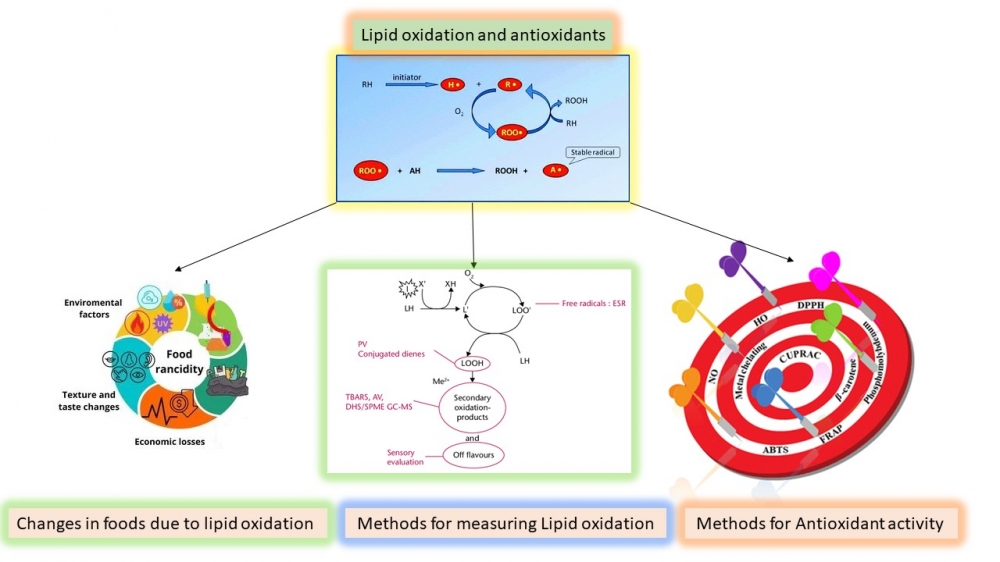JOURNAL 3080
Records of Agricultural and Food Chemistry
Year: 2024 Issue: 3 Special Issue: Abstracts 3rd. TCS, International Food Chemistry Congress February 29-March 03,2024 Antalya Türkiye
p.29 - 29
Viewed 1565 times.
GRAPHICAL ABSTRACT

ABSTRACT
Lipid oxidation is a critical quality parameter in food. Several methods have been developed to determine the level of oxidation and antioxidant activity. This review compares the methods used to determine lipid oxidation and antioxidant capacity in food. The methods developed for lipid oxidation are based on the direct or indirect measurement of primary or secondary oxidation substances produced. Peroxide values and conjugated diene methods are commonly used to determine the primary oxidative products of lipid oxidation in edible oils and high-fat products. Meanwhile, 2-Thiobarbituric acid-reactive substances and chromatographic methods are suitable for determining the secondary products of oxidation in fats. Indirect methods such as fluorometric and sensory analyses are also available. The antioxidant capacity of additives is determined indirectly using the lipid oxidation methods mentioned above or directly based on the free-radical scavenging activity of the antioxidant compounds. It is important to note that each lipid oxidation and antioxidant capacity method uses different approaches, and therefore, one method cannot be used for all foods. Therefore, selecting the appropriate method for specific foods is essential for accurately evaluating lipid oxidation or antioxidant capacity.
KEYWORDS- Lipid oxidation
- antioxidant capacity